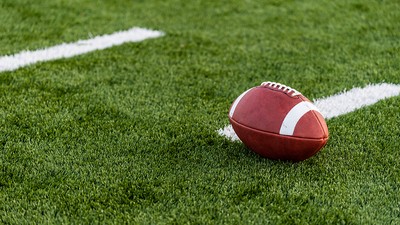 In many of the most popular team sports that use a ball, keeping possession of it is often one of the main factors leading to success. From football (soccer) to rugby to hockey, the side that has a greater proportion of the possession of the balls wins more often than not. Possession is especially important in American football (or gridiron, as it is also known), and retaining possession of the football is often key to victory (coupled, of course, with using that possession effectively).
In many of the most popular team sports that use a ball, keeping possession of it is often one of the main factors leading to success. From football (soccer) to rugby to hockey, the side that has a greater proportion of the possession of the balls wins more often than not. Possession is especially important in American football (or gridiron, as it is also known), and retaining possession of the football is often key to victory (coupled, of course, with using that possession effectively).
Of course, while the side in possession of the ball is trying to retain it as it works its way towards the end zone to hopefully score a touchdown, the other side is trying to gain possession for themselves. When one side loses possession and the other gains it, a turnover is said to have occurred (at least in certain circumstances, as we shall explain shortly).
In this article, we will focus on the various types of turnovers in American football and explain why they are so important. We’ll also look at betting on turnovers and throw in a few stats and facts about them, just for fun. Note that we’ll be focussing on the NFL, the most prestigious competition in American football, so all rules and stats will relate to that (as opposed to College Football or Canadian Football, or other gridiron leagues, some of which have minor differences).
Types Of Turnovers In American Football
As mentioned, a turnover is when one side gains possession of the ball after the other side has lost possession. To be officially classed as a turnover in the stats, this change of possession can happen in one of two ways: by an interception or by a fumble. The term is also sometimes used to describe a side gaining possession after their opponent’s unsuccessful fourth down play, as we explain below.
There are many rather intricate and sometimes confusing (at least puzzling to those who have not grown up with the sport) rules in the game of American football and we won’t delve too deeply into the general laws of the game. We will assume at least a basic knowledge of American football, for instance about how the downs system works and how teams score points. But let’s return our attention to turnovers, starting with interceptions.
Interceptions
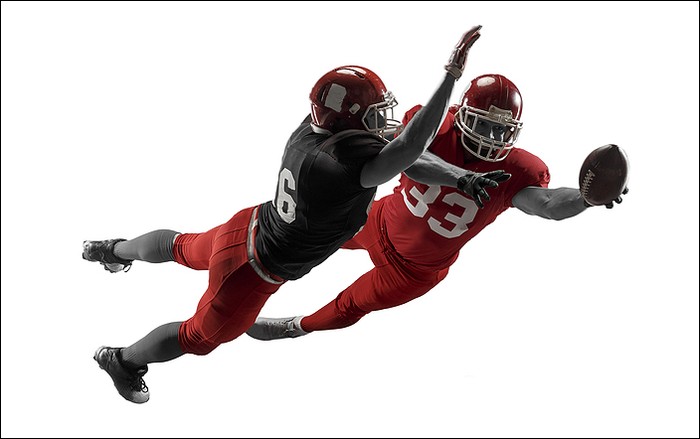
In simple terms, an interception happens when a player on one side catches the ball that was previously in possession of the other side after a forward pass, or a lateral or backward pass. In all cases, the ball must be caught before it touches the ground. If a forward pass hits the ground, the pass will be called as incomplete and opposing players cannot pick it up. In the case of lateral or backward passes that hit the ground, opposing players can gather the ball but it will be classified as a fumble rather than an interception.
Once a player from the opposing team intercepts the ball, his team will have gained possession and will earn a first down once the ball goes out of play or touches the ground (unless the catching player runs on to score a touchdown).
Interceptions of forward passes are recorded in the NFL stats as an interception for the catching player and against the player, usually but not always the quarterback, who threw the attempted pass. Interceptions of lateral or backwards passes are recorded as a fumble by the player who threw the attempted pass.
Fumbles
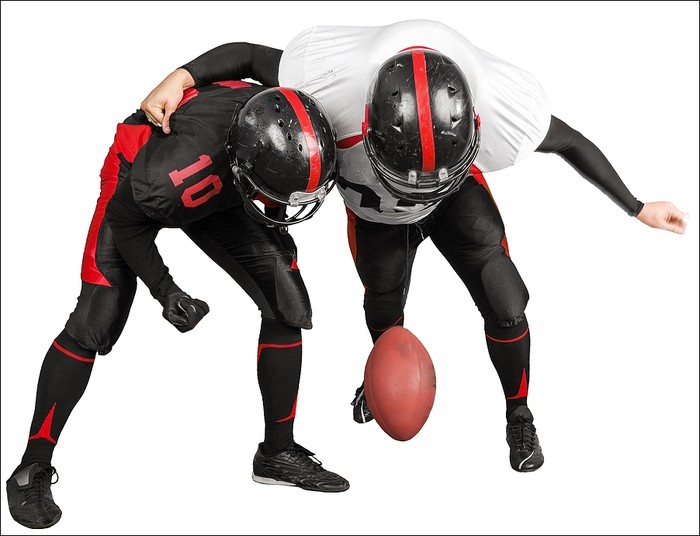
A fumble in American football refers to a situation whereby a player in possession of the football loses possession before he is tackled, goes out of bounds or scores a touchdown. There are exceptions to this, however; if a player losses possession because they have passed, kicked for goal, punted or successfully handed it to another player on their team, no fumble has occurred (except in the case mentioned above when a lateral/backward pass has been intercepted). When a player from the opposing side collects a fumble, a fumble recovery, a turnover has occurred and possession switches to that player’s side.
A fumble can occur simply by a player spilling the ball themselves or it can be caused by an opposing player tackling the ball using his hands or even by headbutting the ball with his helmet. When a fumble occurs, the ball can generally be picked up by either side, although NFL rules say this is not the case during either the final two minutes of a half or during a fourth down; in both these scenarios only the side who were previously in possession of the ball can pick up and advance the ball.
Note that fumbles are sometimes confused with muffs. A muff, however, is when a player mishandles a ball that had not been properly in their possession, the logic being that you cannot fumble a ball that is not fully in your control.
Turnover On Downs
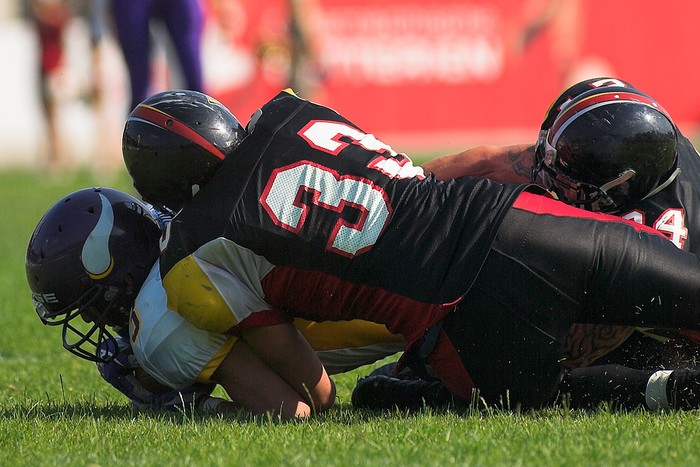
Also known by some as turnovers but not recorded as such in the official NFL stats, turnovers on downs happen when a team has used their four downs and not made enough progress to be granted a new set of downs (i.e. they have not progressed at least 10 yards from the position of the first down). After an unsuccessful fourth down, possession is handed to the opposing team, hence a turnover on down has occurred.
Kicking: When A Change In Possession Is Not A Turnover
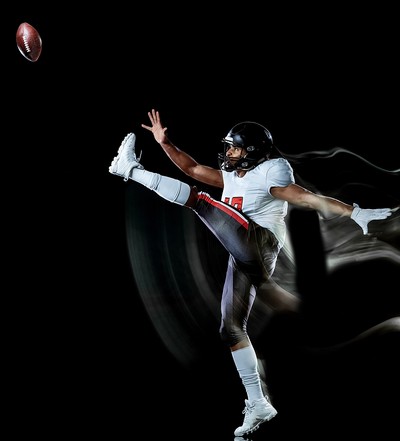 When a player gains possession of the football for his side after his opponents have kicked, this is not a turnover. This is because the opposing side has effectively given possession away with the kick. This happens from free kicks and scrimmage kicks. Free kicks include the kick off at the beginning of the first and third quarters and the start of overtime, and also after a successful field goal or an attempt at a conversion; free kicks also happen after a safety (when a player is tackled in their own end zone), and these are called safety kicks.
When a player gains possession of the football for his side after his opponents have kicked, this is not a turnover. This is because the opposing side has effectively given possession away with the kick. This happens from free kicks and scrimmage kicks. Free kicks include the kick off at the beginning of the first and third quarters and the start of overtime, and also after a successful field goal or an attempt at a conversion; free kicks also happen after a safety (when a player is tackled in their own end zone), and these are called safety kicks.
Scrimmage kicks, meanwhile, include place kicks and drop kicks (that can score points) and punts (that cannot score points). When the receiving team catches the ball from a scoring scrimmage kick, the play ends and the catcher cannot carry the ball forward to gain territory (as they could if intercepting a pass). On the other hand, following a punt, the receiving team has the opportunity to return the ball and can even score a touchdown if the receiver can make it all the way to the end zone.
Note that there is lots more information and extensive notes on the intricacies of the rules relating to turnovers, interceptions, fumbles and plenty more besides in the 2021 NFL Rulebook.
Can You Bet On Turnovers In American Football?
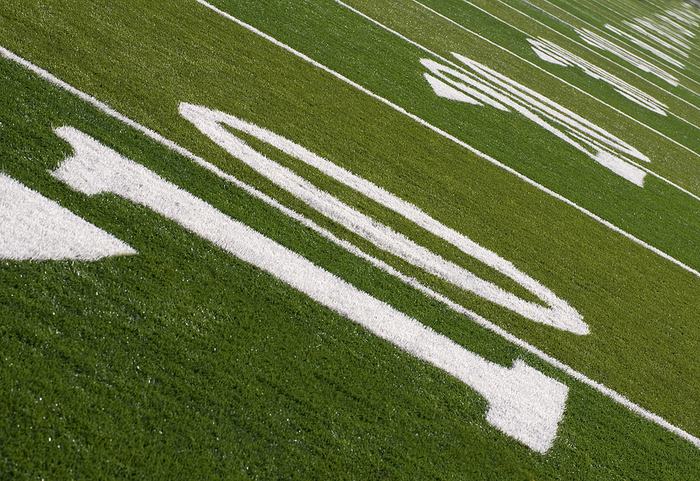
Although it is possible to bet on turnovers in American football matches, this is not a popular bet and is not offered by too many bookmakers in the UK at present. Having said that, some big-name UK bookies do offer the Total Match Turnovers market on NFL matches, usually as an over/under option and usually with 2.5 turnovers being the standard number above/below which you bet. Of course, you can’t have half a turnover in a game of American football. But making it over or under 2.5 turnovers, or some other number incorporating half a turnover, means there are just two betting choices and your bet will either win or lose, which simplifies things for both the bookie and the bettor with no possibility of a tie resulting in a void or push.
Spreads
Some spread betting companies also offer the chance to “buy” or “sell” turnovers in a given NFL game. In this scenario, the bookie would offer a spread of, for instance, 2.4-2.9 turnovers for a given game. If you buy turnovers at 2.9, you will therefore make a positive return if there are three or more turnovers in the game, but a loss if there are two or fewer. If there are three turnovers, your win will be small (just 0.1 times your unit stake), though clearly if there are six turnovers in the game, you could land a tidy sum as you’d be paid out at 3.1 times your stake.
On the flip side, if there were no turnovers in the game, you’d lose 2.9 times your unit stake. If you are planning to try spread betting, it is a very good idea to read and understand how it works as you can lose a lot of money very quickly if you get it wrong and – unlike with conventional fixed odds bets – more than your (unit) stake.
Other Turnover Markets
There are some other turnover-related betting markets offered at some more obscure UK bookies from time to time and also a few US-facing bookies. These include the total number of turnovers in a match, which would involve betting on either the exact number you think will occur, or a group (e.g. 2-3, 4-5, 0-1 or whatever) that covers two or more possibilities. You might also encounter markets that allow you to bet on the team you think will earn the greater number of turnovers. This can sometimes be offered as a handicap market whereby, for example, it might list the Las Vegas Raiders +1 and the New England Patriots -1, with similar odds for each option (such as 5/6 or 10/11).
American Football Turnover Facts And Stats
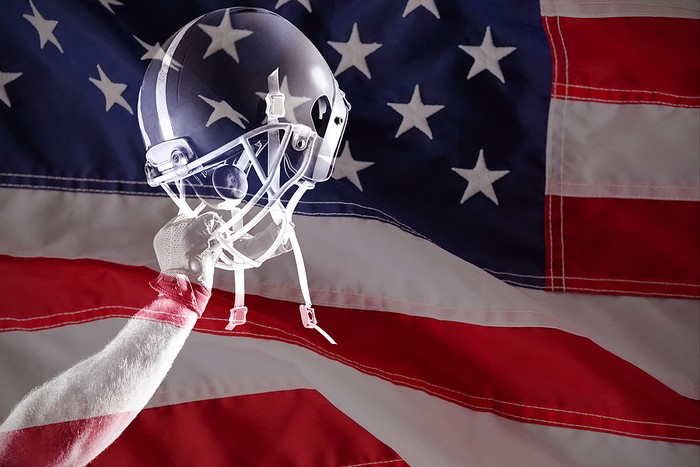
When it comes to most American sports, statistics are very important. Whether it’s the batting averages of baseball players, the average number of rebounds a player picks up in the NBA or the number of fouls someone gives away in ice hockey, many US sports fans are almost obsessed with the mathematical minutiae that accompany the games themselves. This is particularly evident when it comes to American football and the NFL in particular.
The official stats published by the NFL allows fans and (others with any interest) to sift through reams of data that covers just about anything it is possible to measure in a game of American football. Whether you’re interested in a player’s punt returns, their pass completion percentage or the number of field goals they’ve made, you’ll find all that and much, much more available for your perusal. You can also check out team-specific stats on all kinds of things as well as a host of “Next Generation Stats” that includes things like Remarkable Rushes, Fastest Ball Carriers and Improbable Completions.
Here though, are a few stats relating specifically to turnovers, which are correct as of 10 January 2022.
- Most fumbles in a career – 166, Brett Favre (1992-2010)
- Most fumbles in a single season – 23, Kerry Collins (2001) and Daunte Culpepper (2002)
- Most fumbles recovered in a career – 56, Warren Moon (1984-2000)
- Most fumbles recovered in a single seasons – 13, Kyler Murray (2021)
- Most fumble return touchdowns in a career – 6, Jason Taylor (1997-2011)
- Most fumble return yards in a career – 328, DeAndelo Hall (2004-2017)
- Most pass intercepted in a career – 336, Brett Favre (1992-2010)
- Most pass interceptions in a season – 42, George Blanda (1962)
- Most interceptions caught in a career – 81, Paul Krause (1964-79)
- Most interceptions returned for touchdowns in a career – 12, Rod Woodson (1987-2003)
